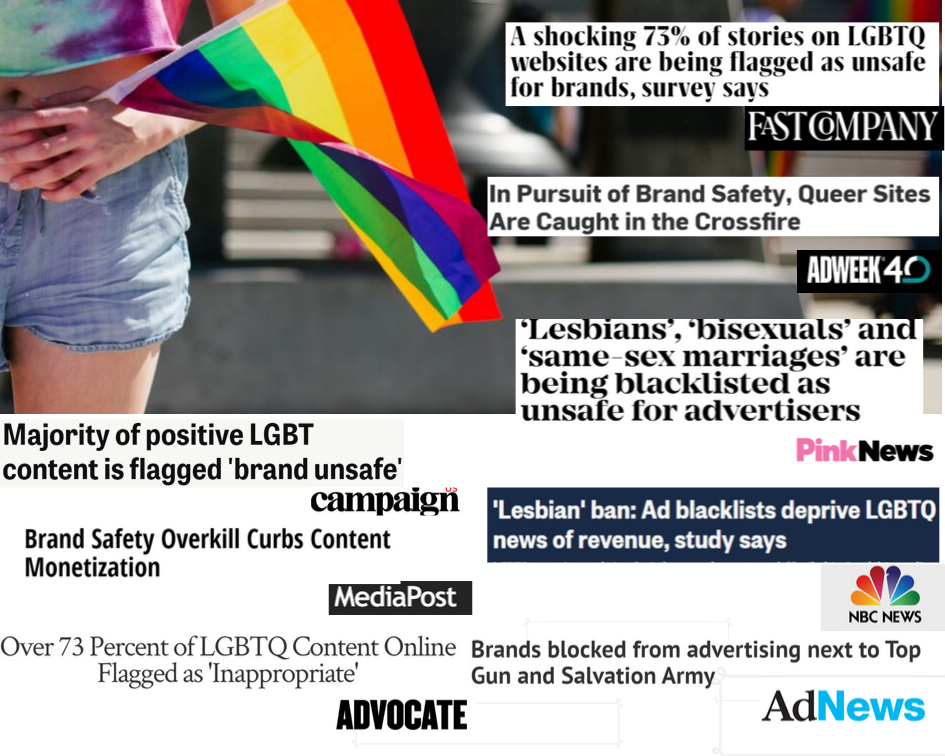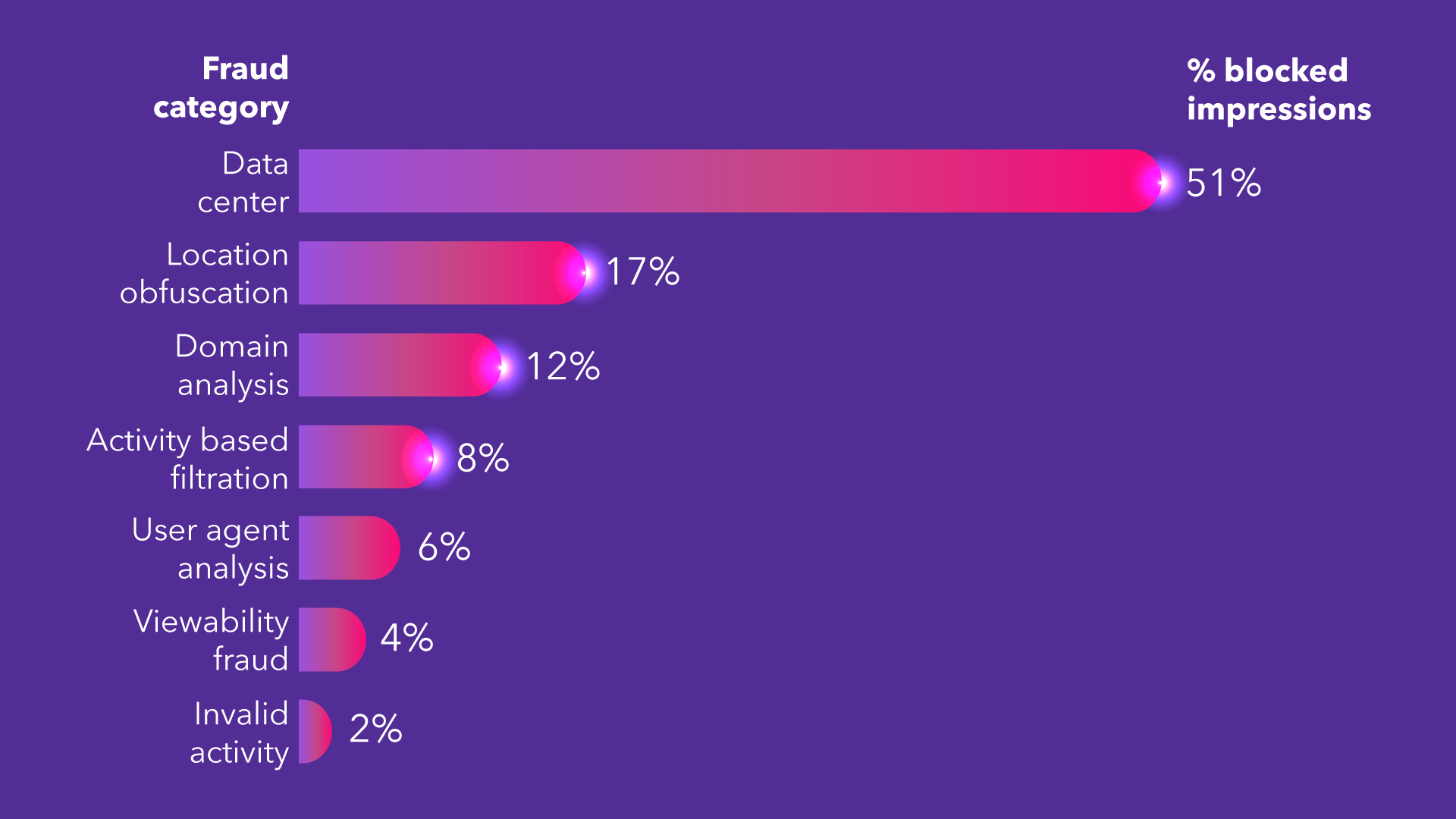CHEQ Transparency Report 2019
Guy Tytunovich
|Announcements | December 23, 2019

Looking back at 2019, CHEQ founder and CEO Guy Tytunovich reveals the fraud and brand safety challenges hurting business (and what 2020 holds)
This year, digital advertising has faced many challenges. More ad fraud was brought to light in court cases, including Uber’s criticisms that it was defrauded of tens of millions of dollars in one case alone. Real-time bidding faced the spotlight, not least as a UK regulator found that it “broadcasts personal data without security in hundreds of billions of bid requests every day.” The cookie is dying. People are opting out of sharing data. In a series of reports, CHEQ, in conjunction with the University of Baltimore’s economics department, began a series revealing for the first time the full global economic costs of online bad actors. This ranged from ad fraud (costing the global economy $23 billion), influencer fraud (costing $1.3 billion) fake news ($78 billion), to daily retail bot attacks ($10 billion).
Rethinking ad verification
It was in response to such issues that CHEQ was founded in 2016. CHEQ’s long-term mission is to act as the “immune system for the internet” and is uniquely well-placed to analyze and attack such problems. In this period, we have developed highly sophisticated technology based on military-grade cybersecurity. With our leadership having extensive backgrounds as cyber intelligence leaders in the Israeli army, we deploy the latest AI and cybersecurity knowledge to fix myriad systemic online problems.
We have begun this mission as an ad verification specialist, guaranteeing fraud-free, viewable, and brand-safe ads. This is providing a new defense that aims to protect the $330 billion spent annually on online advertising. Even this relatively niche part of the advertising ecosystem has been beset by disease. If you skim Reddit for talk about ad verification the phrases that come up are “black box”, “strong-arm tactics”, a “tech tax” and even complaints that DSPs, agencies, and publishers (using the same verification partner) get different results about the scale of fraud on a single campaign. There is traditionally very little clarity on what is being caught in the net of fraud or brand safety violations, and not much willingness by players to volunteer information.
Ending bad practices: bringing transparency to ad verification
In the past year, CHEQ has been fortunate to achieve growth in key markets given the strength of our tech proposition, putting us in the privileged position of protecting billions of global impressions each year across big brands and agencies. Some differentiators: we examine every single impression in real-time (as bidding is in real-time). We do not simply sample traffic (common practice in the market is relying on scraping, cataloging, and indexing). For brand safety, CHEQ uses AI, not keywords or IP blacklists. Our research shows that the use of keywords across the industry sees 73 percent of positive or neutral LGBT content blocked unfairly, and 57% of all safe news content demonetized.
We also do not use IP block lists which are equally useless (“within six hours bad guys have already changed all IP addresses so they keep earning money” says leading ad fraud expert Dr Augustine Fou). We are determined to share all reasoning and provide a full site list of all domains on which your ads were served or blocked. We supply log level data (user agent, IP addresses, and time stamps). It is no major surprise to anyone that companies choosing better technology and more transparency are seeing higher completion and cleaner businesses, not least through thousands of reports that have ended ties with fraudulent partners, while marketers no longer include fraud and brand safety incidents from attribution and targeting.
In this spirit of transparency, here we look back at 2019 to reveal the top threats of fraud, brand safety, and viewability and the trends businesses need to know.
Ad fraud
The breakdown of fraud reasons that most commonly occur across campaigns is below.
Top reasons for blocking
- Data center: Traffic that has been detected by IP addresses that originate from a data center (it is therefore very likely to have come from a server rather than a laptop, smartphone, tablet, or other device used by humans).
- Location obfuscation: masking of internet users’ locations, through VPNs, or other means have increasingly being deployed by criminals to defraud millions of ad dollars and additional biddable inventory outside of a fraudster’s desired geography. Though it may be purporting to be relevant traffic for key markets such as the UK, US, Japan, and other clients, this traffic is actually from countries including Pakistan, India, and Bangladesh.
- Domain analysis: Publisher type fraud which may include domain spoofing, referrer spoofing, and more.
- Activity based filtration: Measurement of user activity which includes repeat transactions, interval testing, and speed of transactions.
Brand Safety
Brand safety has continued to be a hot button issue over the past year. CHEQ has undertaken enormous investment training its AI to understand millions of pieces of content, across 14 languages. We recently announced an industry landmark: that our AI can now understand 200 news categories, in granular detail. This provides the ability to block harmful content from appearing next to our client’s ad and extend the reach of premium inventory which is safe to appear. One major brand, piloting CHEQ against other solutions, found that CHEQ technology achieved 650-times less incorrect overblocking and 253 times higher rate of blocking harmful violations. In Japan, for instance, Goo, a leading Japanese search engine was able to get back into media plans after an advertiser blacklisted it, by showing that around 80% of its content is safe to appear against. Working with Dentsu’s CCI in Japan, 576 million brand safety impressions were blocked stopping brands from appearing next to potentially disastrous articles, including executions of women for affairs, incest, and animal cruelty, while extending the reach of safe campaigns. In a major evaluation, Dentsu’s found that click-through rates increased by up to 250% when CHEQ was in place, and ads were served next to safe content ( compared to publishers without this protection).
Emerging ad verification: Leaders in Connected TV and Console Gaming
CHEQ has launched into new areas, such as ad verification for OTT, (over the top video content). This is propelling further growth for CHEQ as our clients move to OTT. Indeed, IPG’s Magna Global has global OTT ad revenue for 2020 at $5 billion. We are also proud to be the first ad verification player to enter the world of console gaming with dynamic in-game advertising Anzu – providing unparalleled viewability to ensure contextual and audited targeting of gamers. In the first pilot with a household consumer brand we have already engaged with 408, 000 gamers exposed to dynamic advertising in real-time and geo-located filters, across the hottest games in the market on consoles, and apps. This achieved for instance a new level of viewability for ads with an average 80% of gamers of gamers hitting “panoramic” views of ads during gameplay – that is CHEQ’s unique measurement that 95% of the ad is in view for at least two seconds.
2020: Blocking New Online Harms
Advertising remains the gateway for ad fraud, fake news, and other online harms. This makes the challenge of stopping online harm from eating the $330 billion worldwide digital ad spend a formidable one. The level of attacks is going to increase even further in 2020. In the realm of ad fraud, 77% of fraudulent U.S. ad traffic is highly sophisticated (known as SIVT, or sophisticated invalid traffic). SIVT prevention requires far more advanced capabilities, and we have developed 700 different user parameters deployed in real-time, including Device/Browser/OS Fingerprinting and sophisticated honeypots (proprietary bot-traps). The continuing development of AI is predicting new fraud, while CHEQ is also using proprietary ‘mouse movement’ data to train its AI in millions of data points, to understand and distinguish between human interaction online. The development of AI, alongside leading cybersecurity practices gained from other sectors, is enabling us to catch the mouse in the constant game of cat and mouse.
No one is pretending that a murky ad system can be transformed overnight, but the focus on technology and transparency will continue to be core to everything we do in 2020.
Want to protect your sites and ads? Click here to Request a Demo
















